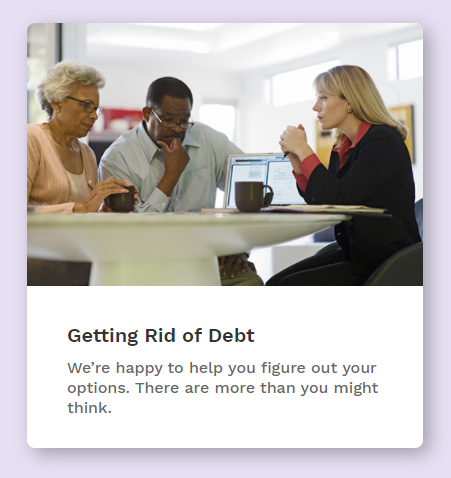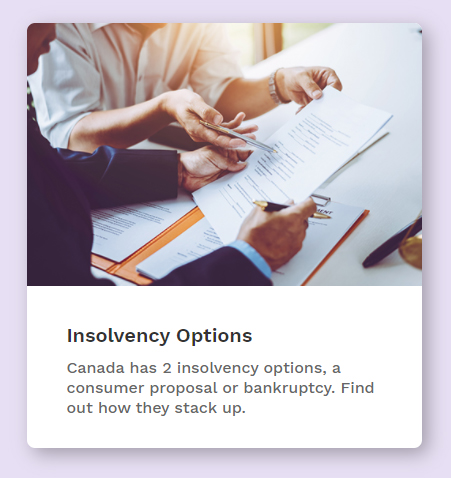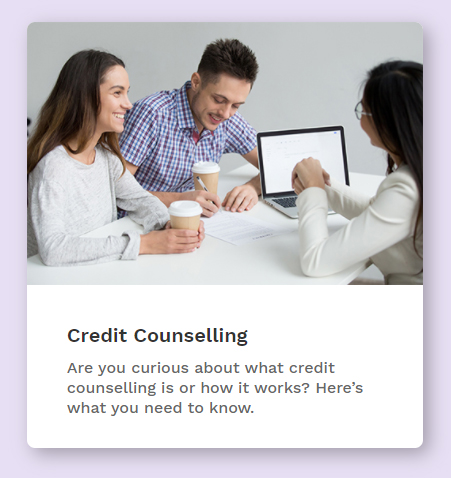What Is a Consumer Proposal?
A consumer proposal is a legal agreement between you and your creditors to repay part of the debt that you owe. The arrangement is governed by Canada’s Bankruptcy and Insolvency Act and the courts and is proposed to your creditors by a licensed insolvency trustee as an alternative to you declaring personal bankruptcy. The amount that the trustee will propose you repay is largely based on your income and what you own when you file a consumer proposal. What makes consumer proposals attractive is their potential to significantly reduce the amount of debt (including credit card debt and other forms of unsecured debt) you’re required to pay your creditors. However, this comes at a cost.
A consumer proposal can only be arranged by a government licensed bankruptcy trustee. It costs about $750 to file a proposal, and if it’s accepted by creditors, it costs another $750 to proceed. The trustee also retains 20% of future payments under this arrangement as a fee for administering the proposal. To be legally binding, the secured or unsecured creditors who hold the majority of an individual’s debt must agree to the proposal. Once they do, the agreed amount is repaid typically over 4 to 5 years. The maximum repayment length possible is just under 5 years.
While a consumer proposal is an alternative to declaring personal bankruptcy, it’s promoted by some as an option to lower monthly debt payments, consolidate unsecured debts into one monthly payment, and eliminate personal debts. While these are great reasons to consider pursuing a proposal, it’s also important to consider the drawbacks and other alternatives to filing a proposal. This will help you make sure you’re making the right decision that you’ll be satisfied with in the long run.
Advantages and Disadvantages of Filing a Consumer Proposal
All debt or interest relief alternatives to bankruptcy have both advantages and disadvantages and are not suitable for everyone. Some of the pros and cons of filing for a consumer proposal are outlined below.
Advantages
- It can substantially reduce the amount of debt you are required to pay your creditors.
- It can be an effective way of consolidating debt if:
- You can’t afford to repay all of what you owe
- You have stable income.
- You have enough money in your budget to make monthly payments.
- It will pause active collection on student loan payments.
- Can be a good option if:
- You don’t qualify for a debt consolidation loan.
- If you have debts (like high government debt) that can’t be included in a debt management program.
- It’s one of the last ways to avoid bankruptcy (however, it’s still a legal insolvency process just like bankruptcy).
Disadvantages
- It’s not a private matter. A consumer proposal is filed as a permanent public record and is included on an online searchable database.
- There are many costs associated with consumer proposals. They usually take longer than filing for bankruptcy, and they impact your credit for roughly the same length of time as bankruptcy
- The Court must approve it.
- Creditors can choose to reject the proposal. If they do, you may need to offer them additional funds to convince them to proceed.
- You might need to sell some of your assets (such as a vehicle, your home, or investments) or include their value in your proposal (essentially buying them back).
- You may need to file for bankruptcy if you miss more than 2 payments.
- Secured debts cannot be put into a proposal.
- Student loan payments less than 7 years old can’t be included.
- It can put certain professional licenses at risk, and the permanent record of your insolvency may also affect some future employment opportunities.
Beware of the Big Debt Rip-Off
Consumer proposals have become the latest method for a growing number of for-profit companies and their sales people to take advantage of vulnerable, unsuspecting consumers. Don’t let this happen to you!
Many debt relief companies are now claiming to offer consumer proposals as an easy way to get out of debt. But there’s a problem.
Only a licensed bankruptcy trustee is allowed to file paperwork for a consumer proposal.
The debt relief companies charge thousands in fees only to refer you to a bankruptcy trustee who then charges his or her own fees. So in a sense, this results in people being double charged for their proposal – paying thousands in fees twice rather than just once.
How to Prevent Getting Ripped Off
- Talk to a non-profit credit counsellor about your financial and debt situation first. They will review your whole financial picture with you and help you look into and understand all of your options to resolve your debt problems and get your finances back on track.
- Never pay anyone for consumer proposal services except for a government licensed bankruptcy trustee (called a Licensed Insolvency Trustee).
- Ask how the person helping you is compensated. Many people who will seek to advise you on your debts work on commission. Make sure the “solution” they are suggesting is in your best interest – not theirs.
- Credit Counselling Canada is an association of local, non-profit credit counselling organizations who do not work on commission. Speak to one of their members like us. If a consumer proposal is actually one of your best options, the organization will tell you and refer you to a bankruptcy trustee they trust for free.
How a Consumer Proposal Can Impact Your Credit
Once you enter into a consumer proposal, a special notation is placed on your credit report in the public records section. Anyone who you allow to look at your credit report can see the public records section. The notation indicating that you’ve filed a consumer proposal is almost identical to the bankruptcy notation. Most banks and credit unions see them both as the same thing. This makes it extremely difficult to borrow money from a bank or credit union for the many years this notation stays on someone’s credit report.
In addition to this, it’s possible that your creditors will report an “R7” rating on any debt included in the proposal. This “R7” rating means that creditors are receiving your payments through a third party.
In this instance, the third party would be your trustee. When you send a payment to your trustee, they distribute the agreed upon dollar amounts to all of your creditors once all applicable fees have been paid.
If you’re making payments to secured creditors (like for a car loan), then outside of your consumer proposal, those creditors will report on those debts separately. Creating and sticking to a realistic budget will make this easier.
Maintaining a good payment history on a secured debt while you’re making your proposal payments will help you re-build credit afterwards.
Contact Us for More Information About Filing for a Consumer Proposal in Canada
There are quite a number of options between financial difficulty and bankruptcy. A consumer proposal might be one good option for some people, but it’s not the best option for everyone. Especially if you’re asking a question like, “How will a consumer proposal affect my credit rating?” To find out what other options you have, speak with one of our professionally trained Credit Counsellors today, in person or over the phone. Our appointments are free, non-judgmental, and completely confidential.
To ask us some questions or to make an appointment to speak with a Counsellor, phone us in Canada at 1-888-527-8999. You can also email or chat with us online right now.
You Probably Have Multiple Options
See What They Are
It’s very possible that a number of viable debt relief options are available to you to resolve your financial situation and carve out a path to becoming debt free. This could include resolving your situation with far more privacy and with less impact to your credit and career than filing for a consumer proposal with the courts. Every option has pros and cons, but it’s worth taking a few minutes to see what your options look like and whether you think you’d like to look into any of them further. If you can take just a few minutes to answer some short questions, you can see what options may be available to you.
Related Articles of Interest
- Canadian Consumer Proposals
- What is the difference between a consumer proposal and bankruptcy?
- Debt Consolidation, Another Option – Filing for a consumer proposal.
- Attend a budgeting workshop or a webinar to avoid defaulting on a consumer proposal.
Related Links
- The Office of the Superintendent of Bankruptcy in Canada
- List of Licensed Bankruptcy Trustees
- Insolvency Terms & What They Mean
- Credit Counselling Society office locations
The Credit Counselling Society is an award winning, non-profit credit counselling service provider with
Speak with a non-profit credit counsellor.
Between financial difficulty and bankruptcy are many options. At a time like this, it can be helpful to sit down with an knowledgeable credit counsellor who can talk through all your options and make a plan to resolve your difficulties. Once you can see your way out, you can regain your peace of mind and move forward with confidence.
Ready to build better money habits and reduce your financial stress? Our Learning Hub offers free, self-paced online courses designed to help you master budgeting, credit, debt management, and more. Whether you're just getting started or looking to sharpen your financial skills, our easy-to-follow lessons and practical tools will guide you every step of the way. Start learning today and gain the confidence to make smarter financial decisions for a stronger tomorrow.
Learning Hub Reviews
Based on 72 reviews
Related Topics

Getting Rid of Debt
We’re happy to help you figure out your options. There are more than you might think.

Insolvency Options
Canada has 2 insolvency options, a consumer proposal or bankruptcy. Find out how they stack up.

Credit Counselling
Are you curious about what credit counselling is or how it works? Here’s what you need to know.





